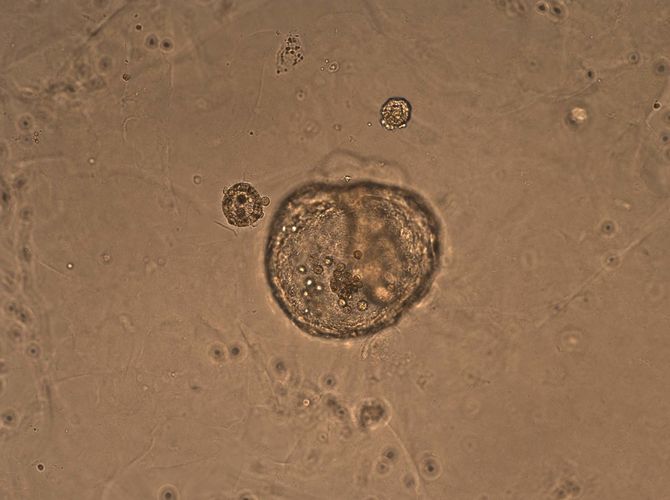Premature babies often suffer from difficulty breathing and require artificial respiration. The physiological and structural immaturity of their lungs leads to increased mortality. Disruption of foetal lung development can also have serious clinical consequences for the new-born child, such as acute respiratory distress syndrome and a form of chronic lung disease called bronchopulmonary dysplasia. In order to develop effective treatments for children born prematurely, researchers currently mainly use two-dimensional cell culture models or test new drugs on animals.
The Leipzig-based scientists, Dr Mandy Laube of the Faculty of Medicine and Dr Claire Fabian of the IZI, have now designed a three-dimensional model of the lung before it is fully formed. This allows them to observe how the lung develops over time. The innovative 3D model should facilitate the development of new therapies and drugs in the future and reduce the need for animal testing. Their research article was recently published in the journal Frontiers in Medicine.
A model for investigating how the lungs develop
Dr Laube from Leipzig University’s Faculty of Medicine initially generated the first lung organoids using an animal model, and explains: “This allows us to compare the biological functions of the lung organoids with established laboratory models such as primary cell cultures and lung sections or animal models. Moreover, they serve as a basis for us to produce human lung organoids in the next step.” Organoids reflect essential aspects of structural tissue organisation as well as organ function and can be used to model developmental and disease processes.
“Our lung organoids are designed to map the lungs in their prenatal development so that we can study organ maturation and enhance functions vital to the premature infant,” explains Dr Laube. The research project was conducted with financial support from the European Regional Development Fund.
Original title in Frontiers in Medicine: “Development and Functional Characterization of Fetal Lung Organoids”. https://doi.org/10.3389/fmed.2021.678438































































